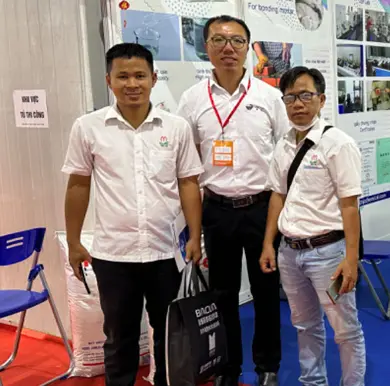
Dec . 12, 2024 19:34 Back to list
hydroxypropyl methylcellulose
Hydroxypropyl Methylcellulose An Essential Polymer in Modern Applications
Hydroxypropyl Methylcellulose (HPMC) is a non-ionic cellulose ether that has garnered significant attention across various industries due to its unique properties and versatility. Derived from natural cellulose, HPMC is produced by the chemical modification of cellulose through the addition of hydroxypropyl and methyl groups. This modification endows HPMC with distinct advantages, making it a valuable ingredient in sectors such as pharmaceuticals, food, cosmetics, and construction.
Hydroxypropyl Methylcellulose An Essential Polymer in Modern Applications
In addition to its role in pharmaceuticals, HPMC plays an essential part in the food industry. It is commonly used as a food additive under the E number E464, where it serves as a thickener, emulsifier, and stabilizer. HPMC is particularly valuable in gluten-free products, where it helps to improve texture and moisture retention. Its ability to enhance the mouthfeel and overall quality of various food products contributes to its widespread acceptance among manufacturers aiming to meet consumer demands for health-conscious and high-quality options.
hydroxypropyl methylcellulose

Cosmetic formulations have also greatly benefited from the incorporation of HPMC. It is used in various personal care products, such as lotions, creams, and gels, primarily for its thickening and stabilizing properties. HPMC enhances the texture of products, providing a smooth and appealing consistency that consumers desire. Furthermore, it aids in controlling the release of active components, ensuring that the skincare benefits are delivered effectively over time.
In the construction industry, HPMC is crucial in the formulation of dry-mix mortars used for tiling, plastering, and masonry. Its water-retention capabilities ensure that the mortar remains workable for an extended period, enabling better adhesion and reducing the likelihood of cracking. The use of HPMC in construction materials supports the durability and performance of buildings, thereby contributing to overall construction quality.
Another advantage of HPMC is its environmental compatibility. Being derived from natural cellulose, HPMC is biodegradable and poses minimal ecological risks compared to synthetic alternatives. This aligns well with the growing trend towards sustainability and the increasing demand for environmentally-friendly products in various industries.
In conclusion, Hydroxypropyl Methylcellulose stands out as a multifunctional polymer with a wide array of applications across different fields. Its unique properties—such as water solubility, thickening, binding, and stabilizing capabilities—make it an indispensable ingredient in pharmaceuticals, food products, cosmetics, and construction materials. As industries continue to innovate and adopt environmentally sustainable practices, HPMC is likely to see even broader adoption, cementing its position as a vital component in modern manufacturing and formulation strategies. The future of HPMC looks promising as it aligns with both consumer preferences for quality and sustainability, paving the way for continued growth and development in its various applications.
-
Versatile Hpmc Uses in Different Industries
NewsJun.19,2025
-
Redispersible Powder's Role in Enhancing Durability of Construction Products
NewsJun.19,2025
-
Hydroxyethyl Cellulose Applications Driving Green Industrial Processes
NewsJun.19,2025
-
Exploring Different Redispersible Polymer Powder
NewsJun.19,2025
-
Choosing the Right Mortar Bonding Agent
NewsJun.19,2025
-
Applications and Significance of China Hpmc in Modern Industries
NewsJun.19,2025







